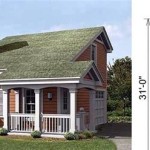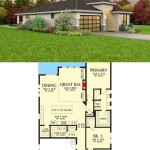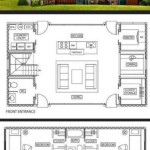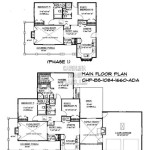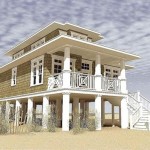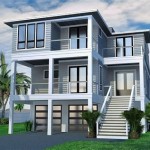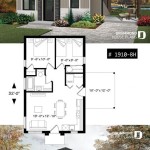2 Bedroom Flat Building Plan With Dimensions: A Detailed Overview
Designing a 2-bedroom flat requires careful consideration of space utilization, functionality, and compliance with building codes. A well-structured building plan, complete with accurate dimensions, is crucial for successful construction, renovation, or even interior design projects. This article provides a comprehensive overview of key aspects to consider when developing a 2-bedroom flat building plan, including detailed dimensional considerations for various spaces within the flat.
The purpose of a building plan is multi-faceted. It serves as a visual representation of the proposed structure, enabling architects, engineers, builders, and homeowners to understand the layout, dimensions, and relationship between different areas. The plan facilitates communication among stakeholders, minimizes errors during construction, and ensures the final product aligns with the client's requirements. Moreover, a detailed plan with dimensions is essential for obtaining building permits and ensuring compliance with local regulations.
Key Considerations Before Drafting the Plan
Before even beginning to sketch out the layout, several crucial factors need to be considered. These considerations influence the overall design aesthetic and practical utility of the 2-bedroom flat.
Firstly, the *target demographic* plays a significant role. Is the flat intended for a young professional, a small family, or retirees? The needs and preferences of each group will differ. For instance, families might prioritize storage space and a larger living area, whereas young professionals might favour a modern, minimalist design with dedicated workspace. Understanding these needs will inform decisions about room sizes, layout, and material selection.
Secondly, *site conditions* must be thoroughly evaluated. This includes factors like the orientation of the building, prevailing winds, sunlight exposure, and soil conditions. The orientation impacts natural lighting and ventilation, which affects energy efficiency and overall comfort. Sunlight exposure can influence the placement of windows and the choice of materials to minimize heat gain or loss. Soil conditions affect the foundation design and structural integrity. These considerations are often mandated by building codes and affect the long-term viability of the structure.
Thirdly, *budgetary constraints* are a critical factor. The size and complexity of the design, the materials used, and the level of finishes all contribute to the overall cost of the project. It is important to establish a realistic budget early on and make informed compromises to ensure the project remains financially feasible. Optimizing the floor plan for material usage and considering cost-effective construction techniques can significantly reduce expenses.
Fourthly, compliance with *local building codes and regulations is imperative*. These codes specify minimum room sizes, ventilation requirements, fire safety standards, accessibility provisions, and other critical parameters. Failure to comply with these regulations can result in delays, fines, or even legal action. Consulting with a qualified architect or engineer is essential to ensure the plan adheres to all applicable codes.
Detailed Dimensional Considerations for Each Room
Accurate dimensions are paramount in a building plan. Each room requires careful consideration of its size and shape to ensure functionality and comfort. The following provides dimensional guidelines for various areas within a 2-bedroom flat.
Living Room: The living room serves as the primary gathering space. A minimum size of 3.6 meters by 4.8 meters (approximately 12 feet by 16 feet) is generally recommended for a comfortable living area. This allows for adequate seating, a coffee table, and entertainment unit. For larger families or those who frequently entertain, a larger space of 4.2 meters by 6 meters (approximately 14 feet by 20 feet) might be more suitable. The shape of the living room should also be considered; rectangular or square shapes tend to be more versatile for furniture arrangement.
Bedrooms: The master bedroom typically requires more space than the second bedroom. A master bedroom should ideally be at least 3 meters by 3.6 meters (approximately 10 feet by 12 feet) to accommodate a queen-sized bed, bedside tables, and a wardrobe. The second bedroom, which could be used for children or guests, can be slightly smaller, ranging from 2.4 meters by 3 meters (approximately 8 feet by 10 feet) to 3 meters by 3 meters (approximately 10 feet by 10 feet). The placement of windows and doors should ensure adequate natural light and ventilation while maximizing usable wall space for furniture placement.
Kitchen: The kitchen's size and layout depend largely on the desired functionality and available space. A galley kitchen, which is narrow and long, typically requires a minimum width of 1.8 meters (approximately 6 feet) to allow for comfortable movement. An L-shaped or U-shaped kitchen generally requires more space, with a minimum area of 6 square meters (approximately 65 square feet). Countertop depth is typically 60 centimeters (24 inches), and aisles should be at least 90 centimeters (3 feet) wide to allow for easy access and movement. The placement of appliances, such as the refrigerator, stove, and sink, should be carefully considered to optimize workflow.
Bathrooms: A standard bathroom requires a minimum area of 1.5 meters by 2.1 meters (approximately 5 feet by 7 feet) to accommodate a toilet, sink, and shower. A larger bathroom of 2.1 meters by 2.4 meters (approximately 7 feet by 8 feet) can comfortably accommodate a bathtub. The placement of fixtures should allow for easy access and movement. Building codes often specify minimum clearances around toilets and sinks.
Balcony/Outdoor Space: If the flat includes a balcony or outdoor space, its dimensions should be carefully considered. A minimum depth of 1.2 meters (approximately 4 feet) is generally recommended for a usable balcony, allowing for seating and potentially a small table. The length of the balcony will depend on the overall design and the desired functionality. Balconies can significantly enhance the living experience by providing outdoor space for relaxation and enjoyment.
Hallways and Corridors: Hallways and corridors should be wide enough to allow for comfortable movement of people and furniture. A minimum width of 90 centimeters (3 feet) is generally recommended. Wider hallways, such as 1.2 meters (4 feet) can enhance the sense of spaciousness and facilitate the movement of larger items.
Storage Spaces: Adequate storage space is crucial in any flat. Built-in wardrobes, closets, and storage cabinets should be planned strategically throughout the flat. The size of storage spaces will depend on the target demographic and the available space. Consider incorporating vertical storage solutions to maximize space utilization. A dedicated storage room, even a small one, can greatly improve the functionality of the flat.
Developing the Building Plan: A Step-by-Step Approach
Creating a building plan requires a systematic approach. The following steps provide a general outline of the process:
1. Conceptual Design: Begin by sketching out rough floor plans that explore different layout options. Consider the flow of movement between rooms, the placement of windows and doors, and the overall aesthetic. Experiment with different configurations to find the most efficient and functional layout. This stage involves balancing spatial requirements, desired aesthetics, and structural feasibility.
2. Detailed Floor Plan: Once a conceptual design is selected, develop a detailed floor plan that includes accurate dimensions for each room and feature. Indicate the placement of walls, doors, windows, fixtures, and appliances. Use appropriate symbols and notations to clearly communicate the design. This plan should be drawn to scale, ensuring accurate representation of the proposed structure.
3. Electrical and Plumbing Plan: Create separate plans that detail the electrical wiring and plumbing systems. Indicate the location of outlets, switches, light fixtures, and electrical panels. Show the routing of water supply lines, drain lines, and vent stacks. These plans are crucial for ensuring the safe and efficient operation of the building's systems.
4. Structural Plan: Develop a structural plan that outlines the foundation, framing, and load-bearing elements of the building. This plan should be prepared by a qualified structural engineer and should comply with all applicable building codes. The structural plan is essential for ensuring the stability and safety of the building.
5. Elevation Views: Create elevation views that show the exterior appearance of the building from different angles. These views should indicate the dimensions of the building, the placement of windows and doors, and the materials used for the exterior finishes. Elevation views are helpful for visualizing the overall aesthetic of the building.
6. Section Views: Develop section views that cut through the building to reveal the internal structure and spatial relationships. These views can be helpful for understanding the vertical dimensions of the building and the relationships between different floors or levels.
7. 3D Renderings: Consider creating 3D renderings of the building to provide a realistic visualization of the finished product. 3D renderings can be helpful for communicating the design to clients and stakeholders.
Throughout the planning process, it is essential to collaborate with qualified professionals, such as architects, engineers, and interior designers. Their expertise can help ensure that the building plan is functional, aesthetically pleasing, and compliant with all applicable codes and regulations.
A well-designed 2-bedroom flat, with a detailed building plan showing comprehensive dimensions, is essential for a comfortable and functional living space. By carefully considering the factors outlined above, and by working with qualified professionals, a successful and satisfying project can be realized.

2 Bedroom Layout Google Search

A Two Dimensional Drawing Showing The Ground Floor Plan Of Bedroom Scientific Diagram

Small Two Bedroom Apartment Floor Plans Google Search

2 Bedroom Adu Floor Plans Designs Layouts Exteriors

Beautiful 2 Bedroom Floor Plans With Dimension Peteroz Construction Blog

Architectural Design Of 2 Bedroom Flat With Decking And Modern Infrastructure Taiwo Salam Co Properties Limited

Apartment R 2 Bedroom Block Design David Chola Architect

Free Editable Apartment Floor Plans Edrawmax

Spacious Two Bedroom Granny Flats Modern Designs

Two Bedroom Al Flats
Related Posts

